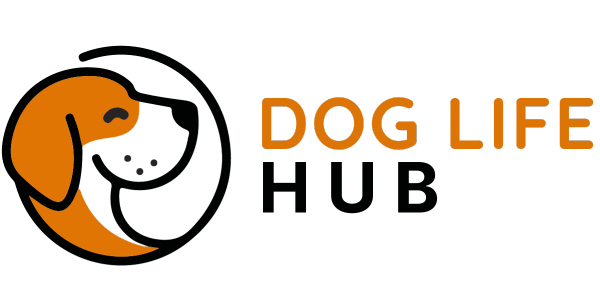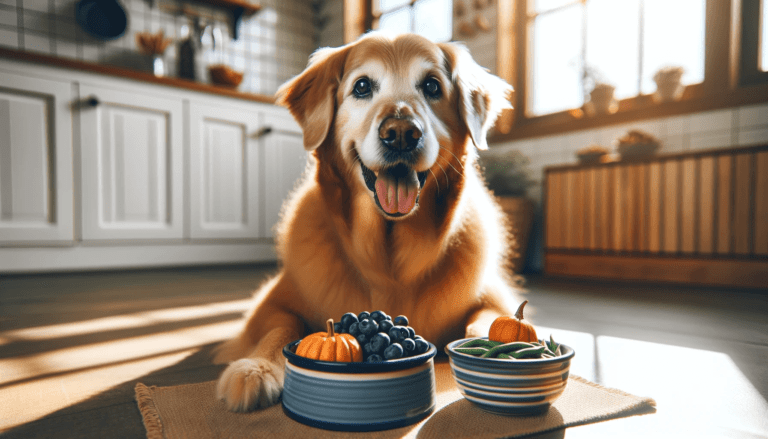Common Health Issues in Senior Dogs: How To Spot Them
Understanding Health Issues in Senior Dogs
Understanding health issues in senior dogs is crucial for several reasons:
- Early Detection and Treatment: As dogs age, they become more susceptible to various health problems, such as arthritis, dental disease, heart disease, kidney disease, and cancer. Early detection of these conditions can lead to more effective treatment, potentially extending a dog’s life and improving its quality of life.
- Tailored Care and Diet: Senior dogs have different care and nutritional needs compared to younger dogs. Understanding these needs can help owners provide a diet and lifestyle that supports their aging pet’s health, such as lower-calorie diets to prevent obesity, or joint supplements for arthritis.
- Behavioural Changes: Older dogs may experience changes in behaviour due to age-related issues like cognitive dysfunction syndrome, which is similar to dementia in humans. Recognizing these changes early can help in managing them more effectively.
- Comfort and Quality of Life: Knowledge of common health issues in senior dogs helps owners make informed decisions about their pet’s comfort and care, especially when it comes to pain management and mobility.
- Preventive Health Care: Regular veterinary check-ups become more important as dogs age. These visits can catch health issues early and provide preventive care, such as vaccinations and dental cleanings, which are vital for maintaining good health in older dogs.
- Emotional Bonding: Understanding and addressing the health needs of senior dogs can strengthen the emotional bond between the pet and its owner, as it involves more attentive and compassionate care during the pet’s later stages of life.
Understanding health issues in senior dogs is essential for providing them with a comfortable, happy, and healthy life in their old age.
What is a Senior Dog?
The age at which a dog is considered “senior” can vary depending on the dog’s breed and size. In general, dogs are typically classified as senior when they reach the last 25% of their expected lifespan. Here’s a rough guideline:
| Breed Size | Weight Range | Typical Senior Age |
|---|---|---|
| Small Breeds | Less than 20 pounds | 10-12 years |
| Medium Breeds | 20-50 pounds | 8-10 years |
| Large Breeds | 50-90 pounds | 7-8 years |
| Giant Breeds | More than 90 pounds | 6-7 years (some people say 5-7) |
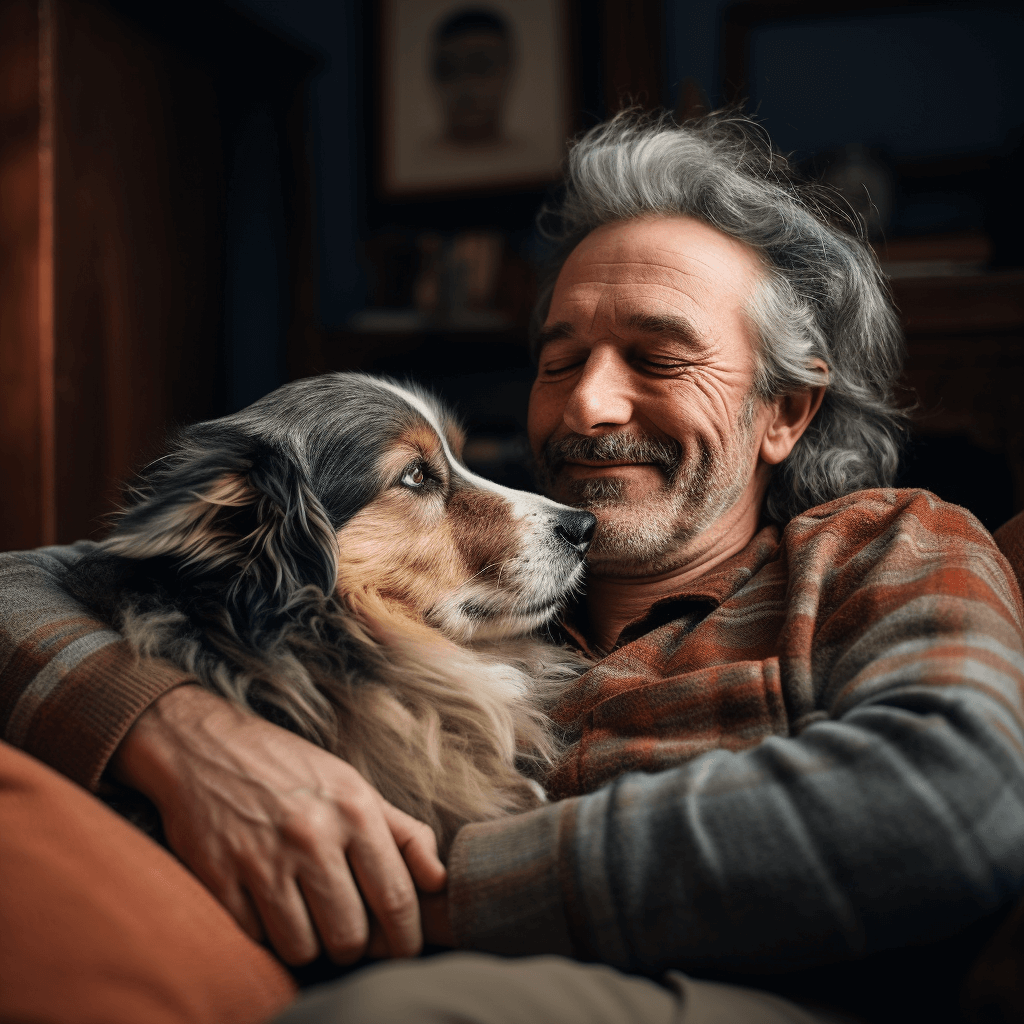
It’s important to remember that these are general guidelines, and individual dogs may age differently. Regular veterinary check-ups are crucial for monitoring a dog’s health as they transition into their senior years.
Recognising the Signs of Aging in Dogs
As dogs age, they often exhibit various signs that indicate they are entering their senior years. Here are some common signs of aging in older dogs:
- Decreased Activity and Energy: Older dogs may be less energetic and spend more time resting or sleeping. They may show less interest in activities they once enjoyed.
- Joint Stiffness and Mobility Issues: Arthritis is common in senior dogs, leading to stiffness, difficulty in climbing stairs, jumping, or getting up after lying down.
- Weight Gain or Loss: Metabolic changes can lead to weight gain, while some older dogs might experience weight loss due to various health issues.
- Changes in Coat and Skin: The coat of an aging dog may become thinner and lose its luster. Some dogs develop more skin growths or bumps.
- Hearing and Vision Loss: Senior dogs may experience a gradual loss of hearing and vision. You might notice your dog not responding to calls or becoming startled more easily.
- Dental Issues: Older dogs are more prone to dental problems like tooth decay, gum disease, and tooth loss, which can affect their ability to eat.
- Incontinence: Aging can affect a dog’s bladder control, leading to incontinence or more frequent accidents in the house.
- Cognitive Decline: Like humans, dogs can experience cognitive decline. Symptoms may include disorientation, confusion, changes in sleep patterns, and decreased interaction with family members.
- Behavioural Changes: Changes in temperament, such as increased irritability or anxiety, can be a sign of aging, especially if linked to discomfort or cognitive decline.
- Lumps and Bumps: The appearance of lumps, bumps, or skin tags is common in older dogs and should be checked by a veterinarian to rule out malignancy.
It’s important to note that these signs can also indicate underlying health issues, not just normal aging. Therefore, regular veterinary check-ups are important to differentiate between age-related changes and medical conditions that may require treatment.
Importance of Regular Vet Visits For Early Detection of Health Issues
Regular veterinary check-ups are crucial for the health and well-being of senior dogs, and they play a key role in the early detection of health issues. Here are the main reasons why these check-ups are so important:
- Early Detection of Diseases: Many diseases common in older dogs, like kidney disease, heart disease, and cancer, can be more effectively managed if caught early. Regular check-ups increase the chances of early detection.
- Monitoring Age-Related Changes: Vets can monitor changes related to aging, such as decreased vision, hearing loss, and cognitive decline, and advise on how to manage these issues to maintain the dog’s quality of life.
- Dental Health: Senior dogs are prone to dental issues which can lead to other health problems if not addressed. Regular dental checks are important for maintaining oral health.
- Weight Management: Older dogs can have altered metabolism and may be less active, leading to obesity or, conversely, weight loss. Vets can provide guidance on proper diet and exercise.
- Adjusting Medications and Supplements: As dogs age, their need for certain medications or supplements may change. Regular check-ups help ensure they are receiving appropriate treatments for conditions such as arthritis or heart disease.
- Pain Management: Dogs often hide pain, and regular veterinary visits can help in identifying and managing pain associated with conditions like arthritis, which greatly improves the quality of life for senior dogs.
- Preventive Care: Regular check-ups can also involve preventive care measures like vaccinations and parasite control, which remain important throughout a dog’s life.
- Behavioural Assessment: Vets can assess changes in behaviour that might indicate underlying health issues or age-related cognitive decline.
- Tailored Care Plan: Veterinarians can provide tailored care plans based on the individual health needs and lifestyle of the senior dog, ensuring a comprehensive approach to their well-being.
- Peace of Mind: Regular check-ups provide peace of mind for pet owners, knowing that any health issues in their aging dogs are being monitored and addressed.
Regular veterinary check-ups are a key component of caring for senior dogs, helping to ensure their health, comfort, and quality of life in their later years.
List Of Common Health Issues in Senior Dogs
Arthritis and Joint Problems
What is Arthritis?
Arthritis, also known as osteoarthritis or degenerative joint disease, is a condition characterised by the inflammation and degeneration of joints. It leads to pain, stiffness, and reduced mobility.
Causes
- Age-Related Wear and Tear: The most common cause in older dogs. Over time, the cartilage in joints deteriorates, leading to inflammation and pain.
- Previous Injuries: Past injuries to joints (like fractures or ligament tears) can increase the risk of arthritis.
- Congenital Disorders: Conditions like hip dysplasia or elbow dysplasia can lead to arthritis.
- Obesity: Excess weight puts additional strain on joints, exacerbating arthritis.
Symptoms
- Limping or Lameness: Noticeable when the dog is walking or after getting up.
- Difficulty Moving: Trouble with stairs, jumping into cars, or getting up after lying down.
- Pain and Discomfort: May be more vocal or resist being touched.
- Stiffness: Especially noticeable after resting.
- Behavioural Changes: Reduced activity, less interest in play, or changes in temperament.
Diagnosis
Veterinarians use a combination of physical examinations, medical history, X-rays, and sometimes blood tests or joint fluid analysis to diagnose arthritis.
Joint issues in Older Dogs
Besides arthritis, older dogs can suffer from various joint-related issues:
- Degenerative Spinal Conditions: Conditions like intervertebral disc disease can cause pain, nerve damage, and mobility issues.
- Soft Tissue Degeneration: Tendons and ligaments can weaken with age, leading to issues like cruciate ligament tears.
- Joint Infections or Tumours: Less common, but can cause joint pain and swelling.
Management and Treatment
- Pain Management: Non-steroidal anti-inflammatory drugs (NSAIDs) are commonly used to reduce pain and inflammation.
- Weight Management: Keeping the dog at a healthy weight to reduce stress on joints.
- Exercise: Regular, gentle exercise helps maintain joint mobility and muscle strength.
- Nutritional Supplements: Glucosamine, chondroitin, and omega-3 fatty acids can support joint health.
- Physical Therapy: Techniques like hydrotherapy can be beneficial.
- Environmental Modifications: Ramps, orthopaedic beds, and non-slip surfaces can make life easier for dogs with joint issues.
- Surgery: In severe cases, surgical interventions may be considered.
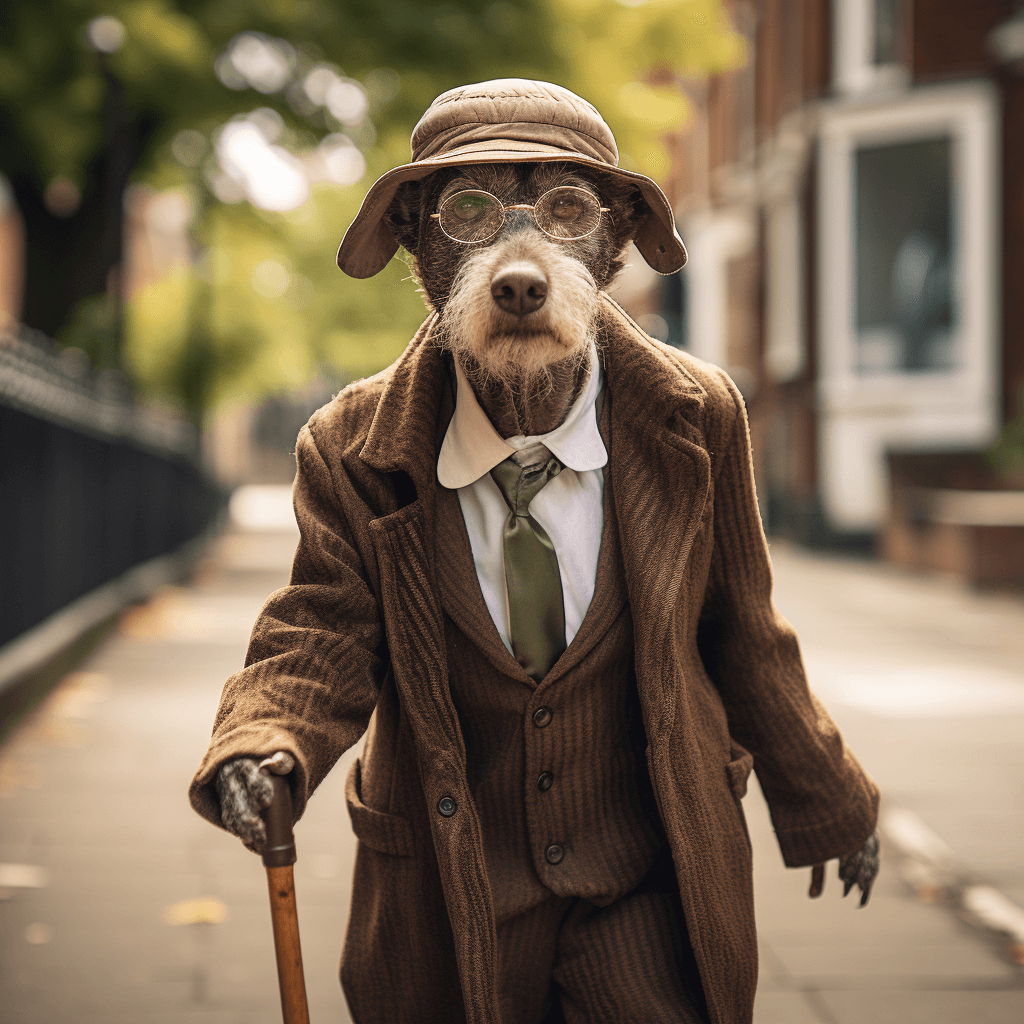
Arthritis and joint issues in older dogs can significantly impact their quality of life. Early recognition and a comprehensive management plan are key to helping these dogs live more comfortably in their senior years. Regular veterinary care is crucial for monitoring and treating these conditions effectively.
Dental Health issues
Common Dental Health Issues
- Periodontal Disease:
The most common dental issue in dogs, periodontal disease is an infection of the tissues surrounding the teeth. It starts with plaque build-up and can progress to affect the gums and bone. In severe cases, it can lead to tooth loss.
- Tooth Decay and Cavities:
While less common in dogs than in humans, tooth decay and cavities can occur, especially in older dogs with poor dental hygiene.
- Broken Teeth:
Older dogs may have weakened teeth that are more susceptible to breaking, especially if they chew on hard objects.
- Tooth Abscess:
An abscessed tooth is a painful infection at the root of the tooth or between the gum and a tooth. It’s often a result of severe periodontal disease.
- Gum Disease:
Inflammation of the gums (gingivitis) can lead to red, swollen, and bleeding gums. If untreated, it progresses to periodontal disease.
Symptoms of Dental health Issues
- Bad Breath: One of the first signs of dental problems.
- Difficulty Eating: Pain or discomfort may cause a dog to eat slowly, chew on one side, or drop food.
- Pawing at the Mouth: Indicates discomfort or pain in the mouth area.
- Bleeding Gums or Blood in Saliva: A sign of advanced gum disease or tooth decay.
- Loose or Missing Teeth: Indicates advanced dental disease.
- Swelling Around the Mouth: Could be a sign of an abscess or tumour.
- Change in Behaviour: Pain can lead to increased irritability or lethargy.
Diagnosis and Treatment
- Veterinary Examination: A thorough dental examination, often under anaesthesia, is necessary for a proper diagnosis.
- Dental Cleaning: Professional cleaning by a vet is crucial for removing plaque and tartar buildup.
- Tooth Extractions: Severely damaged or decayed teeth may need to be extracted.
- Antibiotics or Pain Medication: For infections or to manage pain.
- Dental Surgery: In some cases, surgical intervention may be required to treat advanced dental issues.
Prevention and Management
- Regular Dental Care at Home: Brushing your dog’s teeth regularly is the best way to prevent dental problems.
- Dental Diets and Chews: Special diets and chews can help reduce plaque and tartar build-up.
- Regular Veterinary Check-ups: Regular check-ups allow for early detection and management of dental issues.
- Avoid Hard Chews: To prevent broken teeth, avoid giving your dog hard chews that could damage their teeth.
Dental health is a critical aspect of a senior dog’s overall health. Poor dental health can lead to more serious health issues, including heart, liver, and kidney disease. Regular dental care, both at home and through veterinary check-ups, is essential to prevent and manage dental health issues in senior dogs.
Cognitive Dysfunction Syndrome (CDS)
Cognitive Dysfunction Syndrome (CDS) in older dogs is similar to dementia in humans. It involves the decline in cognitive abilities and can significantly affect the quality of life for both the dog and its owner. Understanding CDS is crucial for managing this condition effectively.
What is Cognitive Dysfunction Syndrome (CDS)?
CDS is a degenerative brain disorder in older dogs that leads to a decline in cognitive functions, including memory, learning, perception, and awareness.
The exact cause is unknown, but it’s thought to be related to the aging of the brain, involving changes like neuron loss, brain atrophy, and the development of beta-amyloid plaques, similar to Alzheimer’s in humans.
Symptoms of CDS
- Disorientation: Appearing lost or confused in familiar environments, getting stuck in corners, or difficulty finding doors or navigating around furniture.
- Changes in Social Interactions: Altered interaction with family members and other pets, such as increased irritability or indifference.
- Sleep-Wake Cycle Disturbances: Restlessness at night, increased sleeping during the day.
- House Soiling: Urinating or defecating in the house despite being house-trained.
- Decreased Activity Level: Less interest in play, going for walks, or other activities they once enjoyed.
- Memory Loss: Difficulty learning new tasks or commands, forgetting previously learned commands.
- Anxiety: Increased anxiety or nervousness, particularly in the evening or night.
Diagnosis of CDS
- Veterinary Evaluation: Diagnosis is typically made based on the owner’s observations and ruling out other medical conditions that could cause similar symptoms.
- Medical History and Symptom Assessment: Detailed history-taking and behavioural assessment are crucial.
- Exclusion of Other Conditions: Conditions like hearing or vision loss, arthritis, incontinence, and organ dysfunction can mimic CDS symptoms and should be ruled out.
Treatment and Management
- Medication: Certain medications can help manage symptoms, though there’s no cure for CDS. Selegiline (Anipryl) is commonly prescribed.
- Dietary Supplements: Supplements rich in antioxidants, omega-3 fatty acids, and other nutrients can support brain health.
- Special Diets: Diets formulated for brain health, often containing antioxidants and omega-3 fatty acids, can be beneficial.
- Environmental Enrichment: Regular exercise, mental stimulation through games and toys, and maintaining a routine can help maintain cognitive function.
- Behavioural Therapy: Consistent training and environmental modifications to reduce anxiety and manage behavioural changes.
- Supportive Care: Providing a safe and comfortable environment, including easy access to food, water, and bedding.
Cognitive Dysfunction Syndrome in senior dogs is a challenging condition, but with early recognition and appropriate management, many dogs can continue to have a good quality of life. Regular veterinary check-ups are important for monitoring the progression of the condition and adjusting the management plan as needed.
Vision and Hearing Loss
Vision and hearing loss are common age-related changes in senior dogs. These sensory impairments can significantly affect a dog’s quality of life, but with proper care and adjustments, dogs can adapt well to these changes.
Vision Loss in Senior Dogs

Causes:
- Age-Related Degeneration: Natural degeneration of the inner ear structures.
- Chronic Ear Infections: Can lead to scar tissue and hearing loss.
- Earwax Build-up: Can temporarily reduce hearing and is treatable.
Symptoms:
- Not responding to verbal commands or sounds.
- Startling easily.
- Excessive barking, as they may not hear themselves as well.
Diagnosis and Treatment:
- A thorough veterinary examination can assess the extent of hearing loss.
- Treatment focuses on managing any underlying cause, like ear infections, though age-related hearing loss is irreversible.
Managing Sensory Loss in Senior Dogs
- Safety and Navigation:
- Keeping the environment consistent to help your dog navigate familiarly.
- Using gates or barriers to prevent falls or injuries.
- Communication Adjustments:
- For vision loss, rely more on verbal commands or sounds.
- For hearing loss, use hand signals or visual cues.
- Extra Care and Attention:
- Be patient and gentle with your senior dog.
- Provide extra comfort and reassurance, as sensory loss can be disorienting.
- Regular Check-ups:
- Regular veterinary visits are crucial for monitoring the progression of vision or hearing loss and managing any related health issues.
- Enrichment:
- Continue to provide mental and physical stimulation appropriate for your dog’s abilities.
While vision and hearing loss in senior dogs cannot often be reversed, many dogs adapt well to these changes with the right support and modifications to their environment.
The key is to ensure they feel safe and comfortable, maintaining their quality of life despite these sensory impairments. Regular veterinary care is essential to manage any underlying health issues and to provide guidance on caring for a senior dog with sensory loss.
Heart Disease
Heart disease in senior dogs is a significant health concern that can impact their quality of life. Understanding the types, symptoms, and management of heart disease is crucial for owners of aging dogs.
Types of Heart Disease in Senior Dogs
- Degenerative Valve Disease:
- The most common type, especially in small breeds. It involves the degeneration of the heart valves, leading to blood flow inefficiencies.
- Dilated Cardiomyopathy (DCM):
- More common in large breeds, this condition involves the weakening and enlargement of the heart muscle, impairing its ability to pump blood effectively.
- Congenital Heart Defects:
- Some dogs are born with heart defects that become more problematic as they age.
- Arrhythmias:
- Irregular heart rhythms can develop in senior dogs due to heart muscle changes or other underlying conditions.
Symptoms of Heart Disease in Dogs
- Coughing: Especially persistent or worse at night.
- Difficulty Breathing: Laboured or rapid breathing.
- Fatigue: Tiring more easily, less interest in exercise.
- Fainting or Collapsing: Due to reduced blood flow.
- Weight Loss or Gain: Including bloating or abdominal swelling.
- Behaviour Changes: Restlessness or withdrawal.
- Reduced Appetite: Due to discomfort or difficulty breathing.
Diagnosis and Treatment
- Veterinary Examination: Includes listening to the heart, checking for fluid in the lungs, and assessing overall health.
- Diagnostic Tests: X-rays, ECG, echocardiogram, and blood tests to assess heart function and structure.
- Medications: To manage symptoms and slow disease progression. Common medications include diuretics, ACE inhibitors, and beta-blockers.
- Diet and Exercise: Special diets for heart health and modified exercise routines.
- Regular Monitoring: Ongoing veterinary check-ups to monitor the condition and adjust treatments as needed.
Management of Heart Disease in Dogs
- Monitoring: Keeping track of symptoms and response to treatment.
- Lifestyle Adjustments: Balanced diet and controlled exercise.
- Medication Compliance: Ensuring medications are given as prescribed.
- Comfort and Stress Reduction: Providing a comfortable, stress-free environment.
Heart disease in senior dogs requires careful management and regular veterinary care. While it’s a serious condition, many dogs with heart disease can still enjoy a good quality of life with appropriate treatment and care. Owners play a crucial role in monitoring their dog’s health and sticking to treatment plans.
Kidney and Liver Disease
Kidney and liver diseases are significant health concerns in senior dogs, often impacting their overall health and requiring careful management.
Kidney Disease in Senior Dogs
Types:
- Chronic Kidney Disease (CKD): The most common form, characterized by a gradual loss of kidney function over time.
- Acute Kidney Injury (AKI): Sudden loss of kidney function, often due to toxins, infections, or severe dehydration.
Symptoms:
- Increased thirst and urination.
- Decreased appetite.
- Weight loss.
- Vomiting or diarrhoea.
- Dull coat.
- Lethargy.
Diagnosis:
- Blood tests (checking for elevated creatinine and blood urea nitrogen levels).
- Urine tests.
- Ultrasound or X-rays.
Treatment and Management:
- Dietary management (low protein, low phosphorus diets).
- Fluid therapy.
- Medications to control blood pressure and reduce protein loss in urine.
- Regular monitoring of kidney function.
Liver Disease in Senior Dogs
Types:
- Chronic Hepatitis: Long-term inflammation of the liver.
- Liver Cirrhosis: Scarring of the liver tissue.
- Cholangiohepatitis: (Cho-lan-gio-hep-a-ti-tis) Inflammation of the liver and bile ducts.
- Liver Tumours: Both benign and malignant tumours can affect the liver.
Symptoms:
- Jaundice (yellowing of the skin, eyes, and gums).
- Vomiting or diarrhoea.
- Increased thirst and urination.
- Abdominal swelling.
- Weight loss.
- Confusion or behavioural changes (due to toxins affecting the brain).
Diagnosis:
- Blood tests (liver enzymes, bilirubin levels).
- Ultrasound or X-rays.
- Biopsy in some cases.
Treatment and Management:
- Diet modification (high-quality protein, low in copper).
- Medications to support liver function.
- Management of underlying causes (like infections).
- Regular monitoring and supportive care.
General Management for Both Conditions
- Dietary Management: Tailored diets are crucial for managing both kidney and liver diseases.
- Regular Veterinary Check-ups: Essential for monitoring disease progression and treatment effectiveness.
- Medication Adherence: Ensuring medications are administered as prescribed.
- Monitoring Hydration: Especially important in kidney disease.
- Comfort and Care: Providing a comfortable environment to reduce stress and support wellbeing.
Kidney and liver diseases in senior dogs require close management and regular veterinary care. While these conditions can be serious, with proper management, many dogs with kidney or liver disease can maintain a good quality of life. Early detection and proper treatment are key to managing these health issues effectively.
Cancer in Senior Dogs
Cancer is a significant health concern in senior dogs, with various forms and manifestations. Early detection and appropriate treatment can make a considerable difference in managing this disease and maintaining the quality of life for affected dogs.
Types of Cancer in Dogs
- Lymphoma: A common cancer affecting the lymph nodes and lymphatic system.
- Mast Cell Tumours: These are skin cancers that can vary in aggressiveness.
- Osteosarcoma: A type of bone cancer, more common in large and giant breeds.
- Hemangiosarcoma: A cancer of the blood vessels, often affecting the spleen, liver, or heart.
- Melanoma: Skin cancer that can be particularly aggressive, especially when affecting the mouth or toes.
- Mammary Gland Tumours: Common in unspayed female dogs.
Symptoms of Cancer in Dogs
- Lumps or Bumps: Not all are cancerous, but should be checked by a vet.
- Abnormal Swelling: That persists or grows.
- Sores That Don’t Heal: A sign of possible skin cancer.
- Weight Loss: Especially if sudden or severe.
- Loss of Appetite: Or difficulty eating.
- Bleeding or Discharge: From any body opening.
- Offensive Odor: Particularly from the mouth.
- Difficulty Breathing, Urinating, or Defecating.
- Lethargy or Depression: A general decline in energy.
- Pain or Discomfort: Shown by changes in behaviour.
Diagnosis and Treatment
- Veterinary Examination: Including palpation of lymph nodes and checking for masses.
- Diagnostic Tests: Such as biopsies, blood tests, X-rays, ultrasounds, and MRIs.
- Surgery: Often the first line of treatment to remove tumours.
- Chemotherapy: Used to treat systemic cancers like lymphoma.
- Radiation Therapy: For localized tumours.
- Immunotherapy: An emerging treatment in veterinary oncology.
Management and Supportive Care
- Pain Management: Crucial for maintaining quality of life.
- Nutritional Support: High-quality diet tailored to the dog’s needs.
- Regular Monitoring: For side effects of treatment and disease progression.
- Emotional Support: For both the dog and the owner.
Cancer in senior dogs can be challenging to manage, but advancements in veterinary medicine have significantly improved treatment options and outcomes. Early detection and a comprehensive approach to treatment and care are key. Regular veterinary check-ups are crucial for early detection and effective management of cancer in senior dogs.
Obesity and Weight Management
Causes:
- Reduced Activity: Senior dogs often have lower energy levels and are less active.
- Metabolic Changes: Aging can slow down the metabolism, leading to easier weight gain.
- Overfeeding: Including too many treats and human food.
- Health Conditions: Certain medical issues like hypothyroidism can contribute to weight gain.
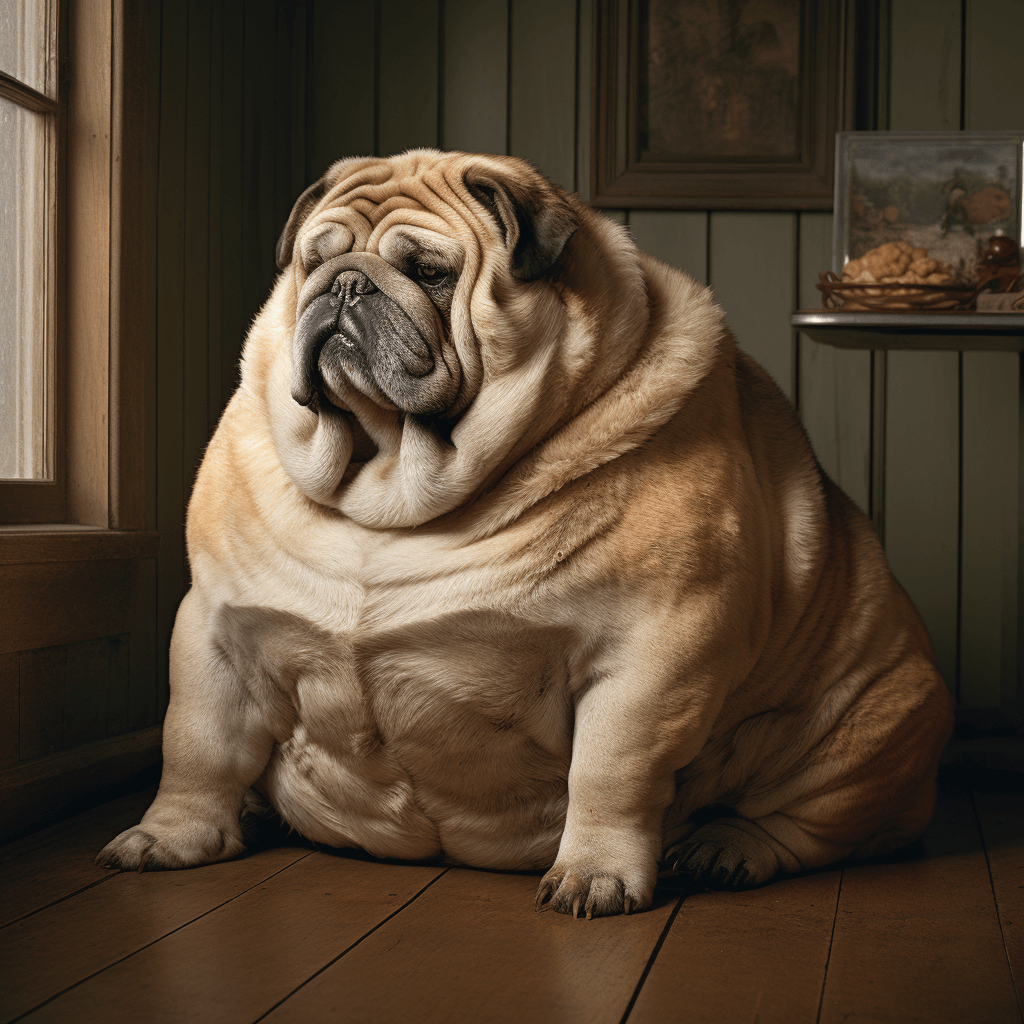
Risks Associated with Obesity:
- Exacerbates joint problems like arthritis.
- Increases the risk of diabetes and heart disease.
- Can lead to respiratory and digestive disorders.
- Puts additional strain on organs and can shorten the dog’s lifespan.
Weight management Strategies
Dietary Adjustments:
- Feed a balanced diet appropriate for the dog’s age, size, and activity level.
- Consider lower-calorie senior dog foods.
- Measure food portions to avoid overfeeding.
Limiting Treats and Human Food:
- Treats should only make up a small percentage of the dog’s daily calorie intake.
- Avoid feeding table scraps.
Regular Exercise:
- Tailor exercise to the dog’s ability and health status.
- Regular walks and gentle play can help keep them active.
Regular Health Check-ups:
- Monitor the dog’s weight and overall health.
- Rule out any medical conditions that may contribute to weight gain.
Weight Loss Programs:
In cases of severe obesity, a veterinarian-supervised weight loss program may be necessary.
Monitoring and Adjustments
- Regular Weigh-ins: To track progress and adjust the diet and exercise plan as needed.
- Consulting with a Veterinarian: To develop a safe and effective weight management plan.
Maintaining a healthy weight is crucial for the health and longevity of senior dogs. Obesity can significantly impact their quality of life and predispose them to various health issues.
A combination of a balanced diet, regular exercise, and routine veterinary check-ups is key to effective weight management in older dogs.
Incontinence and Bladder issues in Senior Dogs
Incontinence and bladder issues are common in senior dogs and can be due to a variety of causes. Understanding and managing these conditions is important for the comfort and well-being of the dog.
Incontinence in Senior Dogs
Causes:
- Age-Related Muscle Weakness: Weakening of the muscles controlling the bladder, leading to involuntary leakage.
- Hormonal Imbalance: Especially in spayed females, due to a decrease in estrogen.
- Urinary Tract Infections (UTIs): Can cause incontinence and other urinary issues.
- Prostate Issues: In male dogs, enlarged or diseased prostate can lead to bladder problems.
- Neurological Disorders: Problems with nerves controlling bladder function.
- Underlying Health Conditions: Such as kidney disease or diabetes.
Symptoms:
- Dribbling urine or leaving wet spots where they sleep or rest.
- Frequent urination or straining to urinate.
- Increased thirst.
- Licking the genital area more than usual.
- Foul-smelling urine (could indicate a UTI).
Bladder issues in Senior Dogs
- Bladder Stones: Formation of stones in the bladder causing discomfort and urinary blockages.
- Cystitis: Inflammation of the bladder, often related to infections.
Diagnosis and Treatment
- Veterinary Examination: A thorough physical exam, discussion of symptoms, and medical history.
- Diagnostic Tests: Urinalysis, blood tests, ultrasound, or X-rays to determine the underlying cause.
Treatment Options:
- Medications: For hormonal-induced incontinence, phenylpropanolamine (PPA) is commonly used.
- Antibiotics: For urinary tract infections.
- Surgery: In cases of bladder stones or certain prostate issues.
- Dietary Changes: Special diets can help manage bladder stones and urinary health.
- Hormone Replacement Therapy: Especially for spayed females with estrogen-responsive incontinence.
Management and Care
- Regular Bathroom Breaks: Frequent opportunities to urinate can help reduce accidents.
- Water Access: Ensure constant access to clean water to prevent dehydration and UTIs.
- Comfortable Bedding: Waterproof or absorbent bedding can help manage incontinence.
- Hygiene: Regular cleaning to prevent skin infections or irritations due to urine exposure.
- Monitoring: Keep an eye on urinary habits and any changes in frequency or appearance of urine.
Incontinence and bladder issues in senior dogs can often be managed effectively with the right treatment and care. Understanding the underlying cause is crucial for effective management.
Regular veterinary check-ups and prompt attention to changes in urinary habits are important for maintaining the health and comfort of aging dogs.
Importance of Awareness of Health Issues in Senior Dogs
Being aware of common health issues in senior dogs is crucial for several key reasons:
- Early Detection and Intervention: Early recognition of symptoms can lead to prompt veterinary care, which is essential for effectively managing or treating many age-related conditions. Early intervention can improve outcomes and, in some cases, even extend the dog’s life.
- Improved Quality of Life: Understanding and managing health issues in senior dogs can significantly improve their quality of life. Addressing conditions such as arthritis, dental issues, or vision and hearing loss can alleviate discomfort and help the dog enjoy its daily activities.
- Preventive Care: Awareness of these issues enables owners to take preventive measures, like proper nutrition, regular exercise, and routine veterinary check-ups, to potentially slow down the progression of age-related diseases.
- Tailored Care and Support: Each senior dog has unique needs. Knowledge of common health issues allows owners to provide more personalized care, adjusting the home environment, diet, and exercise routines to suit their dog’s specific requirements.
- Informed Decisions: Knowing about common senior dog health issues helps owners make informed decisions regarding their pet’s health care, treatments, and daily management.
- Cost Management: Early detection and management of health issues can also be cost-effective in the long run, as it may prevent the need for more extensive and expensive treatments later.
- Emotional Preparedness: Understanding the health challenges that may arise with aging helps owners prepare emotionally for the changes their pets will go through, ensuring they can provide the best care throughout their senior years.
Final Thoughts
Having a senior dog is a rewarding experience. Despite the challenges that come with aging, these golden years can be a time of deep bonding and special moments between a pet and its owner. Senior dogs often have a calm and loving demeanour, having grown fully into their personality and developed a strong, unbreakable bond with their families. They offer a gentle, comforting presence, and their loyalty and affection are as evident as ever.

In these later years, providing a comfortable and loving environment for a senior dog is more than just a responsibility; it’s a way to give back the love and joy they’ve provided throughout their lives. This includes creating a cosy and accessible living space, maintaining a routine that suits their changing needs, and ensuring they receive the necessary medical care and attention.
The joys of having a senior dog include cherishing the quieter moments like leisurely walks where every scent is savoured, or peaceful afternoons spent together. It’s a time to celebrate their life, to recall all the wonderful memories shared, and to keep creating new ones.
Providing a loving and comfortable environment for a senior dog is about making their golden years as golden as possible, filled with love, care, and the dignity they deserve. It’s a way of saying thank you for all the years of companionship they’ve given, ensuring their tail wags happily to the very end.
Thanks for reading – if you have any comments or questions, please leave a comment below – we’d be happy to hear from you!
